Phil Manzanera on Roxy Music
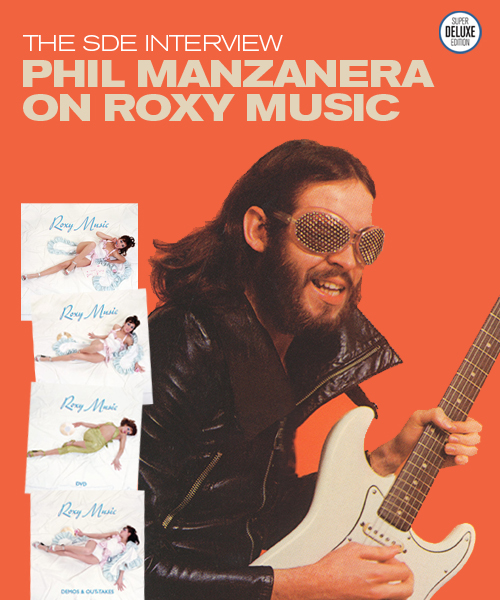
Guitarist Phil Manzanera joined Roxy Music shortly before the band recorded their 1972 debut album. In this SDE interview he discusses the new super deluxe edition reissue, the 5.1 surround mix, the high price (!) and reflects back on those early days. “I was just over the moon to be in a professional band,” he tells SDE Editor, Paul Sinclair….
SuperDeluxeEdition:The reissue has been long in the making hasn’t it?
Phil Manzanera: Yes.
SDE: It has been talked about for the last four or five years.
Phil Manzanera: Or longer.
SDE: How involved have you been in the process?
Phil Manzanera: I did go along to the 5.1 mix that Steven Wilson did and Bryan really did the book – which is amazing. Over the years, I have listened to all the stuff they sent and all the suggestions of how to do it, and it’s true, it’s been going on since… I mean it started with Virgin [Records] actually, before Virgin got bought by Universal, so it does go back quite a long time. But I think we’ve ended up with something that has been worth taking the time on, so I’m very happy and proud of it really. For people who are interested, they’ll love it.
SDE: It ticks most the boxes doesn’t it; the outtakes, the demos, the BBC sessions, and the video footage and the like. But the 5.1 mix in particular, I’m interested in that. I’m quite a fan of surround sound and particularly Steven Wilson’s work in 5.1.
Phil Manzanera: Yeah, he is the man, Steven Wilson. He has cornered the market and you know, what was amazing as we were sitting down and listening to the original tapes – obviously, they were then transferred onto digital – but hearing how beautiful they sounded compared to, you know, the limitations of the technology at the time [when] you didn’t know what the quality of the vinyl was, and you were trying to cut it so the needle didn’t jump and cutting down all the songs so that, you know, there was under 20 minutes [on each side]. But when I sat there and heard really what we’d recorded coming out of each speaker, I was amazed. Actually, I thought oh my God, it could have sounded a lot better.

SDE: So how many tracks did Steven Wilson have to play with then? What was the original recording?
Phil Manzanera: 16 tracks. So you know, not hundreds. I mean what was important about recording then was capturing a band playing live, to a certain extent – not the vocals and stuff, but you know, you did takes in the old analogue way and so everything had to be very concise, there weren’t lots of tracks, so you had to do your part… there was very little opportunity to do any overdubbing, because there just weren’t the [spare] tracks, you know. And you had to split tracks and put a little bit of something on one bit and then later on in the track you might be able to find the space to put something else on. So, there was all sorts of constraints to do with analogue recording, but they made you focus very intently on your part and your sound – you had one shot at it.
SDE: So you must have been there with Steven, to help him navigate his way round all the things you’ve just been describing.
Phil Manzanera: Steven, you know, he’s a professional, he knows what he’s doing. But the great thing is he just put it up and it just sounded amazing, I thought, fans will love it, when they hear it, especially ones that have gone longer, like Ladytron. You know, at the end of Ladytron, on the 5.1, that is what we did at the time, whereas, on the vinyl it just faded out after a very short amount of time. So you get added extra added Eno!
SDE: Are you saying it’s the longer version of ‘Ladytron’ on the 5.1 mix then?
Phil Manzanera: Yes. I think that’s the only one that is longer.
SDE: Because there was, that Record Store Day vinyl in 2015, wasn’t there, that had a stereo remix of the longer ‘Ladytron’….
Phil Manzanera: Yes, that would have come from this.

SDE: Speaking of which, one comment that Steven Wilson made on his Facebook page is that on the DVD in the box set, there’s obviously the 5.1 mix which we’re discussing, but there isn’t a hi-res stereo version of the album…
Phil Manzanera: Yes, I can’t answer that, I’ve got no idea why that didn’t happen. You know, and I mean [he’s] absolutely right. I knew I was going to be banging on about how great the 5.1 mix is so it’s a bit disappointing that they didn’t do it, but I suppose you know, this thing is huge, like The Titanic; [you] hope it doesn’t sink and crash. But maybe they’ll bring it out at some point… but you know it’s just, there’s so many aspects of this box set to deal with that quite frankly it’s a miracle it’s come out at all.
SDE: Well, there’s so many aspects but there’s also so many people involved in approving things as well. I guess those two things together become a bit tortuous after a while?
Phil Manzanera: A bit tortuous, yeah! Bands… that’s bands for you. A bloody nuisance.
SDE: So how long did it take Steven to do the 5.1 mix?
Phil Manzanera: Well, I was only there for a day but I don’t know if he had prepped it before – maybe he had and I was just listening to what he had already done and just making sure that you know, all the things were in the right place.
SDE: Let’s go back to the past then and talk a little bit about Roxy Music in 1971/1972. As you said, you weren’t there for the very early part.
Phil Manzanera: No.
SDE: But you were around on the fringes weren’t you? How did you feel when you didn’t get the job and Dave O’List ended up being the guitarist? Did you think that was it – your dreams were shattered?
Phil Manzanera: Well, I failed the audition, yeah! You know, Richard Williams wrote that column in the Melody Maker, [“Horizon: New names that could break the sound barrier” from August 1971] and the band I was in, Quiet Sun, we had sent in a tape and he had written a blurb about us, in which he actually I think said really that the best thing about it was the press release [laughs] which was written by Ian MacDonald, who became the editor of NME, eventually. But we were very influenced by early Soft Machine – that’s another story – but the Roxy coverage came out like the week after, or two weeks later, and we all read it, me and [fellow Quiet Sun band members] Bill MacCormick and Charles Hayward, and thought ‘wow this sounds really great’. So that’s how I knew about Roxy, it wasn’t called ‘Roxy Music’ then.

And then when Bill MacCormick joined Robert Wyatt’s group, Matching Mole – and I didn’t want to continue with my band, Quiet Sun – he said “There’s an ad in the Melody Maker and they’re looking for a guitarist… so why don’t you go and audition?” So if I look at the ad now, you know, I can’t remember exactly what it said, but something like… “the perfect guitarist for an avant rock group”.. oh yes, here it is…. ORIGINAL, I thought yes, ‘tick’; CREATIVE, ‘tick’; ADAPTABLE, ‘tick’; MELODIC, yes, ‘tick’; FAST, ‘tick’; SLOW, ‘tick’; ELEGANT, ‘tick’; WITTY, ‘tick’; SCARY – when annoyed, yes, ‘tick’; STABLE, ‘tick’; QUALITY MUSICIANS ONLY… ah, no!
But David O’List… I’d loved his playing in The Nice and when I heard that he had got the gig I thought ‘well fair dos, he’s brilliant’. You know, I’d seen him at The Albert Hall on this amazing tour with Pink Floyd and The Nice and Amen Corners all that stuff, and I thought ‘well fair dos, you know, he’s better than me’ [laughs]. But yes, I seemed to bump into them [Roxy Music] all over the place, different people at avant-garde concerts and things and we became friendly and I then witnessed a few instances… obviously Bryan thought that having someone with ‘a name’.. a named musician would help the band, but then people started calling it ‘David O’List’s Roxy’ and I think that started cheesing him off.
SDE: Really?
Phil Manzanera: Yeah. And then there was that occasion where my friend was doing the lights for them and I went and I saw them pull up in a transit van with Bryan Ferry driving and Eno in the back and they were all carrying the big amps and equipment in and Dave was just standing there, because obviously he’d been in a band with roadies so he’s not going to be humping equipment and I thought ‘oh, oh’. Even I helped carry the bloody stuff in! And obviously there was, I think potentially, there were problems brewing there.
SDE: The gig you’re describing, that was the one, where the management came down wasn’t it?
Phil Manzanera: No, actually that wasn’t. That was the Friends of the Tate [Gallery] Christmas party, which was like in a room somewhere off Tottenham Court Road. And the one actually where the management came down, was at an empty Bingo hall in Wandsworth, I don’t know why I was there. I was there and Richard was there and that’s right, and Mark Fenwick and David Enthoven came in to see the band playing, you know, no audience or anything.

SDE: But you were there, you watched the whole thing did you?
Phil Manzanera: I watched the whole thing and I swear there was a punch up and as Mark Fenwick left he said “get rid of the guitarist”. And I got a call three days later, or something.
SDE: So what was the punch up about then?
Phil Manzanera: I don’t know… but I think they were getting a bit irritated with David not turning up on time or with his attitude or something… I’m not quite sure. But I was like, my jaw dropped, you know. I mean you know, whether this really happened or not or I’ve just invented it, I don’t know – everyone had their own version of what happened. But I do remember Mark Fenwick saying “get rid of the guitarist”. There was no one else there and I just put my hand up, but no one saw that of course…
SDE: And the good thing is because they knew you, because you’d already auditioned before, it was a case of ‘we know he can do it, let’s get him in’.
Phil Manzanera: Well, they didn’t know I could do it, but I’d swotted up on their stuff and I’d heard the John Peel session they did. I’d learnt the stuff beforehand; I didn’t tell them.
SDE: That’s quite impressive.
Phil Manzanera: No, it’s terribly simple! You know I’d been playing prog rock before; you know and it was like three bars in 17/8 and four bars in 13/8…. and now I was playing two chords, I thought ‘wow this is fantastic’. I could pretend that I was in The Velvet Underground [laughs].
SDE: So how long was this before the album was recorded? It was a couple of months before you joined, or something like that?
Phil Manzanera: Well, I did this audition the first week in February, the next week we signed the contract – the 14th of February – I think three or four weeks later we were in the studio recording the first album and… I can’t remember, [I think] a couple of months later it was out and it was in the charts.
SDE: I was saying to Andy Mackay that even if you go right back to the beginning with him, it’s a relatively quick journey from starting a band to having your first album out. But for you that’s even more the case. It’s compressed into a tiny amount of time, you’d gone from….
Phil Manzanera: …Nothing. From zero to hero!

SDE: Indeed. So what was the dynamic like with the personnel in the band? Did you feel a bit like ‘Ringo’ for a while?
Phil Manzanera: I was just over the moon to be in a professional band. I knew these guys were great. Even when I went to the first audition I thought there’s something special about these guys. They were all a bit older than me, about five years older; they were very grown up; they’d been to university; they had bank accounts; they’d got a loan for the PA; they had a car; they were living in a little house (that they were renting); they were teachers, two of them, Bryan Ferry and Andy; and it was like… I just was over the moon. It was like Christmas every day, quite frankly [laughs].
SDE: When you got the job as guitarist, did you have a day job at that time? What was happening in your life?
Phil Manzanera: When I got the call from Bryan Ferry to come and supposedly mix the sound, I said ‘I’ve got no idea’, and he said ‘Well, Eno will teach you, because he’s doing it at the moment, in the audience’. I said ‘Oh, okay’, that’s why I turned up and then they said ‘Oh there’s a guitar there, do you want to have a go… because Dave hasn’t turned up’ ….it was great really, I guess I can’t say more than that. I was 21, I’d always wanted to be in a professional band and I knew these guys… and I liked them a lot, as people. All my musical education, which was all home taught with the MacCormick brothers – you know Ian MacDonald, me and Bill – we’d listened for the previous eight years, to so much music from America and from England, from classical music… we had it down, you know, we knew what was good and what was bad. I could tell that there was something really great there and so I was just so happy to be, you know, in there. At the time everyone just thought, well it might last a few years, [but] you didn’t really think about it, it’s like joining the Navy or something, you know – let’s go and see the world. And in those days, you expect most musicians to die by the time you get to 30 or something… and of course we’re all still, a lot of us are still here.
SDE: Tell me a little bit about the actual album sessions. Pete Sinfield took up the producer role, but it does sound fairly much like he was considered a sort of safe pair of hands, he was comfortable with the studio, but he wasn’t necessarily informing any kind of decisions about the music or the arrangements or anything like that.
Phil Manzanera: No. I mean he, basically he was overseeing and trying to get us to play exactly what we’d been playing at the gigs. There was very little sort of vocal producing which, you know, once you get Chris Thomas doing it on the next album onwards, that’s proper producing. You know, Pete was a lovely guy, and is a lovely guy, and he did the best he could with the engineer, who was Andy Hendriksen and for most of us it was the first time in a proper recording studio. So there was a little bit of… when the red light was coming on, he was a little bit nervous but he just had to take a deep breath and get in the moment and try and get the take down. It was really very exciting.
SDE: You probably wouldn’t have known any different anyway would you, in terms of exactly what a producer is supposed to do or not supposed to do?
Phil Manzanera: Absolutely not, no. I had no idea and we did always say we were inspired amateurs, and it’s true… we were total amateurs but we could play two or three chords. That’s not quite true, because I’d been playing some proggy rock and Graham Simpson was a very good bass player; he had lots of musicality – but for everyone else was, it was like ‘less is more’ and it was about the total combination of things that created the Roxy sound, you know.

SDE: And where did your musical training come from, I mean were you self-taught, did you get lessons as a kid?
Phil Manzanera: I had a very different trajectory to all the others in Roxy. I was brought up in Cuba during the revolution, in Hawaii, in Venezuela, in Columbia. My mother first tried to teach me guitar aged seven in Havana; Cuban songs and things like that. I heard rock and roll from American kids in Venezuela, Buddy Holly and things like that, and watched all the Elvis films and then begged my parents to send me to England to boarding school, which they did [laughs] – I was nine. And you know it was in 1960 and then I just was just immersed in the whole growth of the music business basically; the British scene, The Beatles, The Stones, everything that came along… it just drove me wild and you know, I just wanted to do it more and more.
So I just taught myself and learned from people at school, at Dulwich College, you know, David Rhodes was there as well – you know, he went on to play with Peter Gabriel – and we had some good people there such as Charles Hayward, who went on to form This Heat who John Peel loved. So we just taught each other and we learnt as we went along.
People didn’t really have lessons in those days … well, I think I may have gone to try to have one lesson in Tottenham Court Road and got very depressed when I was about 15 because you had to read music and I really didn’t want to read music, I wanted to start from totally the opposite way; I loved free-form jazz and the stuff like that and also psychedelia; what was happening on the West Coast or the East Coast was more about freedom, not being constrained. So I think it’s that aspect of my playing that they liked, my sort of anarchic side, the fact I loved Syd Barrett and stuff like that, you know… rather than being a technically proficient rock guitarist, which you know David [O’List] really was much more proficient in that area than me – much, much more.
SDE: Bryan said he has reservations about the way he sings on the album. Did you get the vibe… that Bryan was a little bit dissatisfied?
Phil Manzanera: Well, it was done very quickly, you know, it was all done, I think the whole thing was done in a couple of weeks and it was done on a budget – five grand, I think the whole thing cost. So there was not a lot of time spent on it and I think when you’re doing vocals and if you’ve got a proper producer, you know like Chris [Thomas], who had watched The Beatles work with George Martin, more time is spent on the vocal takes. So I can understand why he might feel a bit like that… but it did capture a moment, that’s the thing, and we had to get going and get on with it. You know, that was very much the case in that early period, you had to get records out, you had to go on tour, there wasn’t the time that is spent on albums now – that just didn’t exist. Except for bands that had contracts with EMI, like Pink Floyd, who didn’t have to pay any studio time – they’d just be in there forever.
SDE: There was a lot of personnel changes prior to your arrival. You had people like Roger Bunn, Dexter Lloyd and of course there was one more before the record even came out which was Graham Simpson leaving. That must have been difficult.
Phil Manzanera: It was… Now the other thing you need to remember, from my point of view, was that I only really knew Graham for about six weeks – between when I joined and when we finished recording the album – that’s when I worked with him. The others obviously spent a lot more time with him, but I recognised that he was a very good musician. But unfortunately… I’m not sure whether his mother died or something [Graham’s mother did die of cancer in April 1972] but I think he a bit of a breakdown – it was all too much for him.

SDE: The album came out, you had a hit single a few months later [‘Virginia Plain’] and you were then playing reasonably big gigs. Andy Mackay was saying that he wasn’t really sure you were ready especially when you went to America. What are your thoughts on that?
Phil Manzanera: Going to America, that was just like [laughs] it was just laughable really. Because really yes, we’d turn up, you know the first gig, Madison Square Garden, supporting Jethro Tull who were really expert at playing big venues – and I mean, the biggest venue we had played was supporting maybe Alice Cooper at Wembley or something, which is pretty big but not like Madison Square Garden – and there we are with our tiny little amps and we just came off in a complete daze and then watched them play incredibly and with all the lights and the PA and everything, we thought ‘ah, oh dear, how do we do this?’ So we had a lot to learn, and then we were put on supporting the strangest people, you know, Edgar Winter and Steve Miller’s blues band and Humble Pie… and it was all totally wrong and difficult and we had to try and learn how to play with the big boys – which we never did, really [laughter].

SDE: Well let’s talk about the artwork on the front cover. The great thing about the reissue is you get to see all the alternative shots. How important was the design and art direction?
Phil Manzanera: All that I think was absolutely brilliant and I had nothing to do with it [laughs]. As I say, I had a different trajectory from the rest, so I didn’t have the qualifications to comment. I just looked at stuff and thought ‘wow, that’s amazing – thank you!’. Bryan put together that team of Nick de Ville and Anthony Price… And you know, all his training… the fine arts training, it all came to the fore. That’s what I like about the book actually – which Bryan spent years putting together, umming and ahhing and driving everybody totally bonkers – but it’s actually rather good and there’s so much stuff in there that I’ve never seen before. So I can’t wait to get hold of a copy quite frankly.
SDE: The Richard Williams notes are very good.
Phil Manzanera: Yeah. I think is Richard is an amazing writer, I love Richard. Obviously, he plays his part in the story as well…
SDE: But let me ask you this though, the physical set is undoubtedly going to be a lovely object and the audio, the contents and the 5.1 mix… it sounds amazing. But it is £130 to buy it… there will be a lot of people that may consider that an outrageous amount of money, no matter how good it is. What are your thoughts on that?
PM: I wish I could say that we were going to make a whole load of money out of it [laughs] but I think, the horrible truth is that we, the band, are on the same percentage that we were in 1972…
SDE: Really? Hasn’t anyone re-negotiated it for you?
PM: Well you know, I’m trying to speak to Universal at the moment on behalf of everybody because, you suddenly think ‘well this is wonderful and I love this’… but [then] hang on, we’re not actually going to earn anything from it. But I’m very proud to have it come out. But I’m sure, it will get discounted… I mean, that area is nothing to do with me. One of the things about being a musician, who started in 1972, is that you sign to someone, they get bought by someone, they get gobbled up by someone else and 45 years later you end up on a label that has nothing to do with the original thing. You don’t have any rights over it because of copyright law – which needs changing incidentally…
SDE: ... and you have no relationship with any personnel at the record company.
PM: Well, obviously the people who actually put it together, Mark Wood and David Rowe they’re very nice people, [but] they’re not the business people. They’re not the corporate entity. But when it comes to the price, I hope it’s going to be a beautiful thing to have and what things end up costing in the end just depends on discounting and all these different people who sell the stuff…it might be a suggested retail price. Who knows?
SDE: And tell me about the experience going on Top of the Pops. Andy says he hated it but that’s everyone’s dream isn’t it, going on Top of the Pops?
Phil Manzanera: Oh no, it was fantastic – I loved it! We had the ability to go on Top of the Pops and show off basically, all this wacky look. I thought was very wonderfully provocative and it had such an incredible influence on so many people when they saw it. I remember watching Jimi Hendrix do Hey Joe on Top of the Pops – I was about 15 or 16 – I ran to the telly and sort of wanted to jump in it, I thought what the… that’s amazing!
And I know so many people, especially musicians from other bands, once they saw us on that performance it somehow gave them permission to get on with doing whatever they were trying to do. And the effect of the first album, all over the world, was incredible. I mean, I was in Spain, playing in Barcelona last week and there was a couple of musicians from a very famous Spanish band, one of the most famous who started in the ‘80s and they said, when they heard Re-Make/Re-Model for the first time it was just [like]… light bulbs went off in their heads. ‘What the hell is this, I’ve never heard anything like it…?’ I still think it’s fantastic, Re-Make/Re-Model. You know you’ve got the beginning … and it really lays out our store, if you like. I still think it sounds innovative and interesting, the first Roxy album, I really think that it is great stuff. Absolutely. So many people come up and say that they were affected by that first album, whether it’s the music or the style or whatever – it’s great!
Thanks to Phil Manzanera who was talking to Paul Sinclair for SuperDeluxeEdition.
You can buy a special ‘keepsake’ printed edition of both Andy Mackay and Phil Manzanera‘s SDE interviews from the SDE shop. These will be signed by SDE Editor Paul Sinclair and hand-numbered. This booklet will slot snuggly into the super deluxe box set. Click on the image below to order.
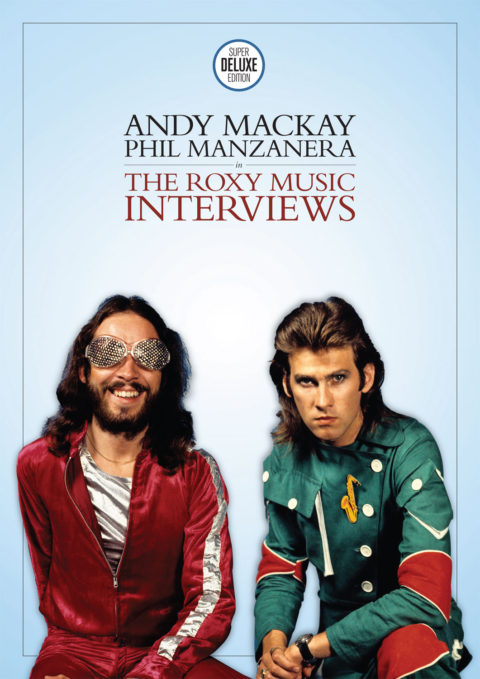
Click on this image to order the ‘keepsake’ booklet.
The Roxy Music super deluxe edition reissue is out now. To Phil’s point in the interview it has now been discounted in America to $79 or £57!
Compare prices and pre-order

Roxy Music
Roxy Music - four disc super deluxe

|
|
||||||||||||||||||||||||||||||||||||||||||||||||||||||
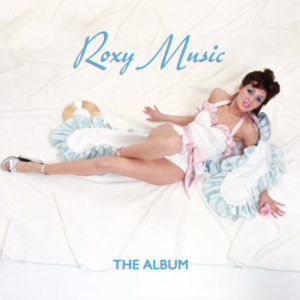
DISC ONE
THE ALBUM
- Re-Make/Re-Model
- Ladytron
- If There Is Something
- Virginia Plain
- 2 H.B.
- The Bob (Medley)
- Chance Meeting
- Would You Believe?
- Sea Breezes
- Bitters End
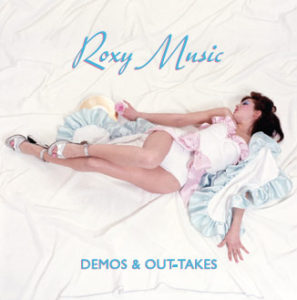
DISC TWO
DEMOS & OUT-TAKES
EARLY DEMOS April/May 71
- Ladytron
- 2 HB
- Chance Meeting
- The Bob (Medley)
ALBUM OUT-TAKES
- Instrumental
- Re-Make/Re-Model
- Ladytron
- If There Is Something
- 2 H.B.
- The Bob (Medley)
- Chance Meeting
- Sea Breezes
- Bitters End
- Virginia Plain
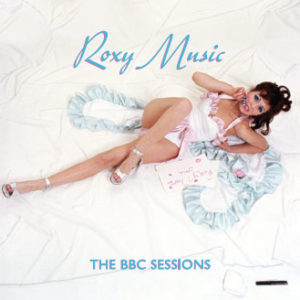
DISC THREE (disc two on the 2CD deluxe)
THE BBC SESSIONS
THE PEEL SESSIONS 4/1/72
- If There Is Something
- The Bob (Medley)
- Would You Believe?
- Sea Breezes
- Re-Make/Re-Model
THE PEEL SESSIONS 25/5/72
- 2 HB
- Ladytron
- Chance Meeting
THE PEEL SESSIONS 25/5/72
- Virginia Plain
- If There Is Something
BBC IN CONCERT 3/8/72
- The Bob (Medley)
- Sea Breezes
- Virginia Plain
- Chance Meeting
- Re-Make/Re-Model
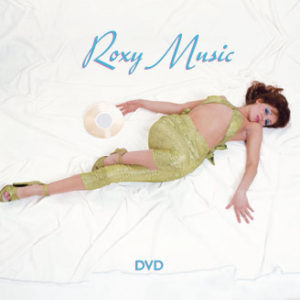
DVD
The full album remixed in 5.1 by Steven Wilson
VIDEOS
- Re-Make/Re-Model – The Royal College Of Art, 6/6/72
- Ladytron – The Old Grey Whistle Test, 20/6/72
- Virginia Plain – Top Of The Pops, 24/8/72
- Re-Make/Re-Model – Full House, 25/11/72
- Ladytron Full House, 25/11/72
French TV, Bataclan, Paris, 26/11/72:
- Would You Believe
- If There Is Something
- Sea Breezes
- Virginia Plain

 Interview
Interview
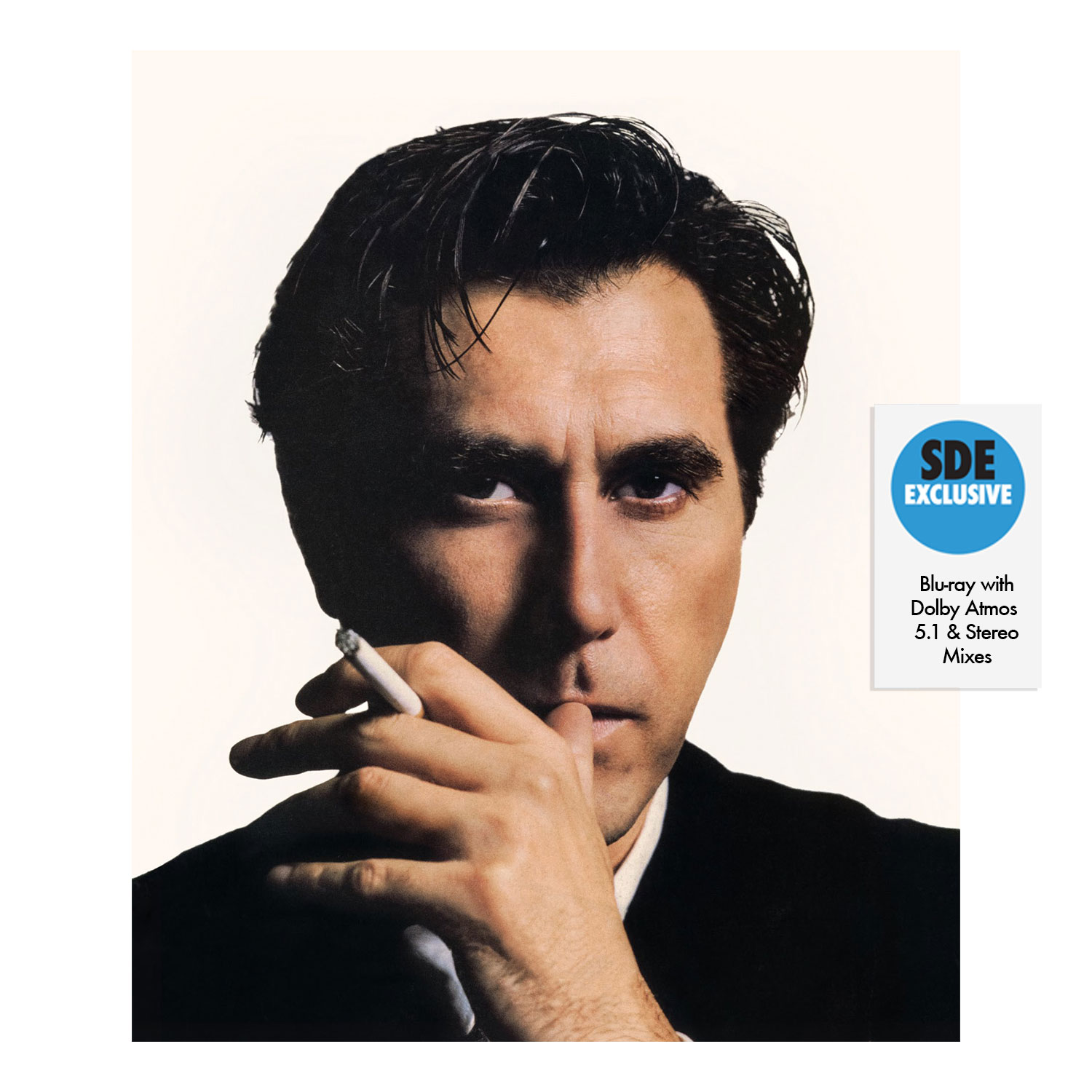
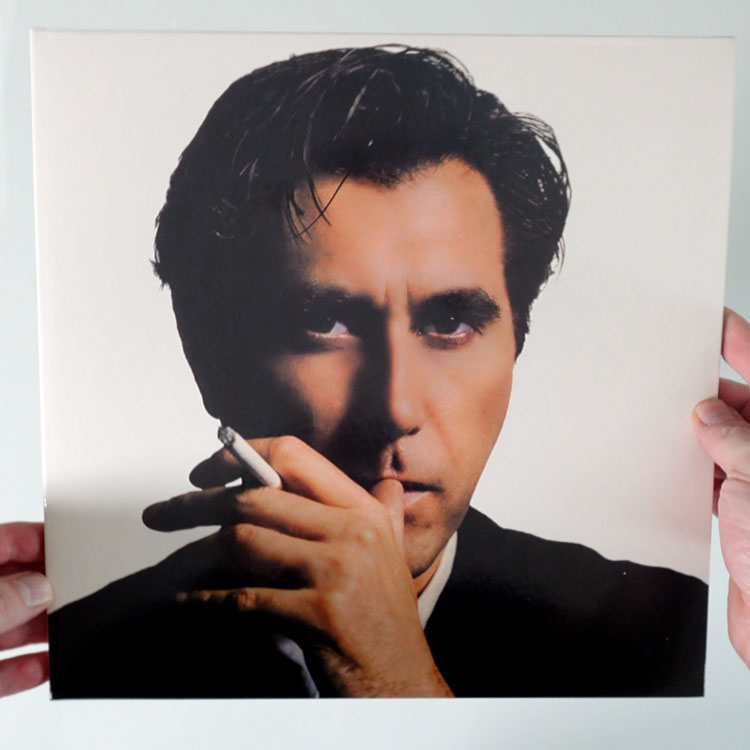
 SDEtv
SDEtv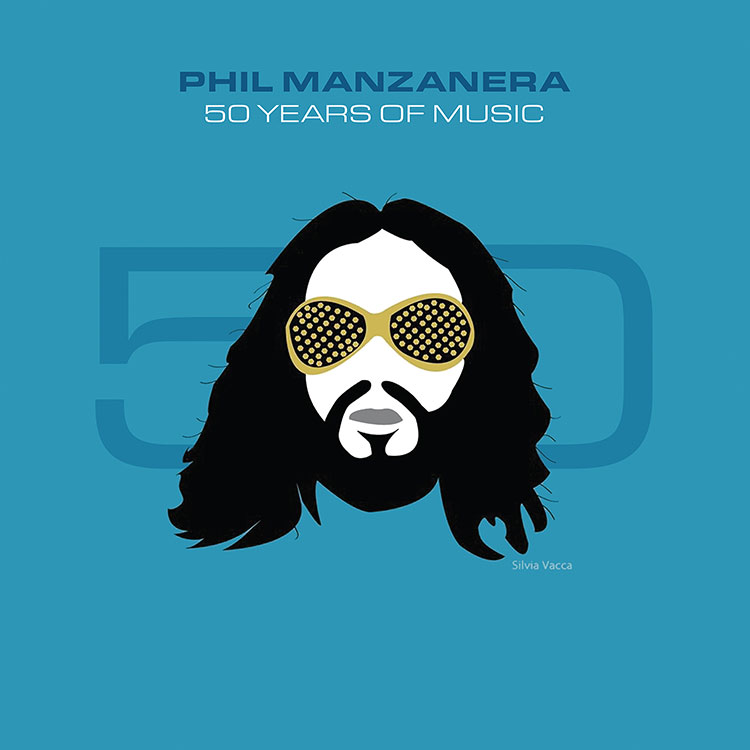
By Paul Sinclair
36